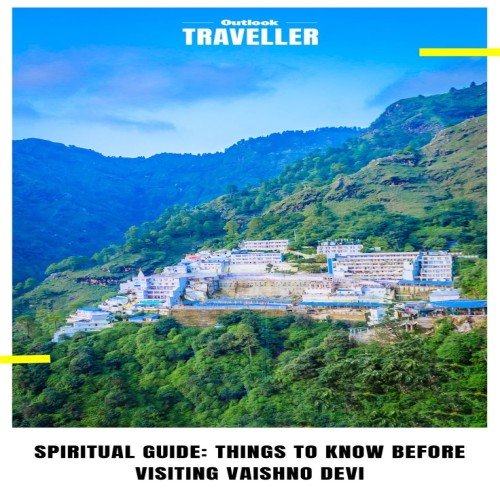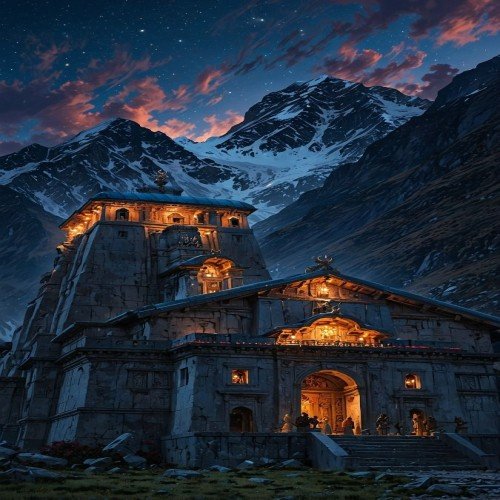
Discovering Patnitop: A Hidden Gem in Jammu and Kashmir
Posted at 13/Nov/24

Exploring Katra: The Gateway to Vaishno Devi
Posted at 13/Nov/24

Vaishno Devi Blog: A Spiritual Journey to the Divine Abode
Posted at 13/Nov/24

Discovering Hampi: A Journey Through the Ancient Ruins of Vijayanagara
Posted at 13/Nov/24
Written by Lalit Saini
Posted at 09/Nov/24

Kedarnath, situated in the Rudraprayag district of Uttarakhand, is one of the most revered and remote pilgrimage sites in India. Nestled at an altitude of 3,583 meters (11,755 feet) in the Garhwal Himalayas, it is dedicated to Lord Shiva and is one of the twelve Jyotirlingas, or sacred abodes of Shiva. The Kedarnath Temple, surrounded by towering snow-covered peaks, has a history that dates back over a thousand years and attracts devotees, adventurers, and nature lovers alike.
Kedarnath is more than just a religious site; it’s a testament to spiritual endurance and natural beauty. The journey to Kedarnath, whether by foot, helicopter, or pony, offers views of stunning landscapes, glacial rivers, and lush alpine meadows, providing an experience that is both physically challenging and spiritually uplifting.
It also forms part of the Chota Char Dham Yatra in Uttarakhand, which includes Yamunotri, Gangotri, Kedarnath, and Badrinath, making it a significant destination for Hindu pilgrims.
The Kedarnath Temple is an architectural marvel, said to have been established by the Pandavas after the Kurukshetra war to seek forgiveness from Lord Shiva. The temple as it stands today is believed to have been built by Adi Shankaracharya in the 8th century. It is constructed out of massive stone slabs and stands resilient against time and nature. Miraculously, the temple withstood the catastrophic floods of 2013, further adding to its revered status among devotees.
The inner sanctum holds a naturally formed hump-shaped Shiva lingam, symbolizing Lord Shiva in his "Sadashiva" form.
The trek provides an immersive experience of nature’s beauty, and many devotees choose this arduous journey to connect deeply with their faith and the mountains.
The Kedarnath Temple is open from April/May (depending on the Hindu calendar) until November. Here’s a breakdown of the best times to visit:
Summer (May to June): This is the best time for the Kedarnath Yatra, with mild weather and clear skies. Temperatures range from 5°C to 18°C, making it ideal for trekking and sightseeing.
Monsoon (July to August): Monsoon brings heavy rains and can lead to landslides and challenging trekking conditions. It is advisable to avoid visiting Kedarnath during this season for safety reasons.
Autumn (September to October): After the monsoon, the skies clear, and the weather remains pleasant. It’s an excellent time to visit Kedarnath, as the post-monsoon air is crisp, and the peaks are often snow-capped.
Winter (November to April): The Kedarnath Temple remains closed during winter due to heavy snowfall. However, the deity is moved to Ukhimath, where devotees can offer prayers during the off-season.
By Road: The road journey to Kedarnath begins from Rishikesh or Haridwar. From there, you can drive to Gaurikund, the last motorable point, which is approximately 225 km from Rishikesh.
By Train: The nearest railway station is Rishikesh (about 220 km from Kedarnath). From Rishikesh, you can take a bus or taxi to Gaurikund.
By Air: The closest airport is Jolly Grant Airport in Dehradun, approximately 238 km from Kedarnath. From the airport, you can reach Gaurikund via taxi or bus.
By Helicopter: Helicopter services are available from Phata, Guptkashi, and Sirsi to Kedarnath, making it a quicker option for reaching the temple.
Physical Preparation: The trek to Kedarnath can be demanding. It’s advisable to start preparing for the trek a few weeks in advance by doing regular cardio and leg-strengthening exercises.
Pack Light: Carry only the essentials, such as warm clothes, a raincoat, trekking shoes, and a water bottle.
Health and Safety: The altitude can cause symptoms of Acute Mountain Sickness (AMS) for some visitors. Take your time to acclimatize, stay hydrated, and avoid alcohol.
Respect Local Customs: Kedarnath is a holy place, so dress modestly and follow all temple rules and local customs.
Accommodation: Basic accommodations are available in Kedarnath, but it's essential to book in advance during peak pilgrimage season. GMVN guesthouses, dharamshalas, and tents are popular options.
Kedarnath isn’t just about spirituality; it’s an experience that encompasses faith, resilience, and natural beauty. With its breathtaking landscapes and profound religious significance, Kedarnath calls visitors to immerse themselves in the serenity of the Himalayas. Whether you seek divine blessings or simply wish to escape into nature’s grandeur, Kedarnath provides a journey of inner peace, endurance, and connection with the divine.
Visiting Kedarnath is not only a pilgrimage but also a transformative journey through some of India’s most spectacular mountainous terrain. The memories of this holy land, combined with the beauty of the Himalayas, leave a lasting impression on all who make the journey.
Copyright © Disha Holidays 2024-2025 | All Right Reserved